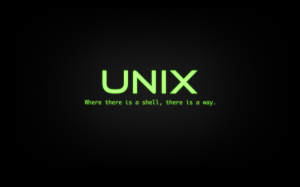Unix, the core server operating system in enterprise networks for decades, now finds itself in a slow, inexorable decline. IDC predicts that Unix server revenue will slide from $10.2 billion in 2012 to $8.7 billion in 2017, and Gartner sees Unix market share slipping from 16 percent in 2012 to 9 percent in 2017.

Jean Bozman, research vice president at IDC Enterprise Server Group, attributes the decline to platform migration issues; competition from Linux and Microsoft; more efficient hardware with more powerful processor cores, which is less expensive and requires less maintenance; and the abundance of Unix-specific apps that can now also run on competitor’s servers.
Errol Rasit, research director at Gartner, concurs that the primary cause of Unix weakness over the past decade is migration from the RISC platform to x86-processor based alternatives, which can run many Unix workloads, usually at attractive price/performance ratios. Today, x86 technology attracts most new deployments and innovation, such as cloud computing and fabric-based computing, which further validates the technology as a preferred platform.
“The challenge for users is to understand the minutiae of Unix technology trends and provider strategies,” adds Rasit, “And then apply them to their own unique investment strategy, application, and support situation. Many users will continue to invest in Unix systems for mission-critical environments, but many more will seek to divest their reliance on the platform, due to recent ecosystem changes or in line with IT modernization, migration, or consolidation strategies.”
Within the Unix ecosystem, IBM has taken advantage of the turmoil at HP, as well as the uncertainty that resulted from Oracle’s purchase of Sun. Forrester Vice President Richard Fichera says, “Although the Unix market is declining, there is still considerable competition and churn in the segment. HP-UX has lost considerable market share to IBM, which, as far as I can see, has posted net gain in revenues and market share. Oracle has continued to see declining hardware revenues as well, although their latest product cycle of T5 and M5 servers look truly extraordinary, especially the T5.”
According to Bozman, IDC gives IBM 56 percent market share, based on 2012 worldwide Unix server revenue. Oracle is a distant second at 19.2 percent, followed by HP at 18.6 percent. No one else above two percent.
Down, but not out
While Unix revenues are in a long, slow descent, nobody is predicting that Unix will go away completely.
Rasit also notes that some Unix platforms are still preferred due to lack of x86 support in several areas, such as vertical-specific software used in telecommunications; manufacturing and finance; some vertical scaling applications; security and/or encryption features; and low-latency, high-speed backplanes for controlled response times in SLA critical environments.
“Gartner’s current forecast is for RISC and Itanium-based Unix spending to drop from 16 percent of the server market in 2012, to 9 percent in 2017 — representing a steady, but glacial-like decline,” Rasit says. “For this position to reverse, Unix providers would need to re-energize software support for the platforms; however, the ongoing momentum of Linux and Windows alternatives makes re-energizing the platform increasingly unappealing.”
According to Randy Meyer, vice president/general manager of integrity servers at HP, Unix servers still have advantages when it comes to reliability. For example, automatic failover of applications in data centers on opposite ends of a continent to provide customers with the ability to continuously operate through catastrophes or surges in demand. Think ‘Black Friday’ or ‘Cyber Monday,’ when retailers must be running on all cylinders in order to make their profits for the year.
“Businesses only get one shot when their products ‘go viral.’ Given that everything in a modern supply chain, from the raw materials through manufacturing and distribution, is now ‘just-in-time,’ there is no excess inventory or margin in the system. And, in today’s mobile-enabled consumer market, any outage, any misstep in pricing or logistics is amplified by social media and can affect the entire enterprise in real time,” Meyer says. “Many systems are capable, but not necessarily proven; especially under rare, extraordinary events. No one really knows a system’s reliability until it’s tested under extreme circumstances. Unix has three decades of reliable service.”
Kirk Bresniker, vice president/chief technologist for HP servers, adds, “It also goes beyond the resilience of the platform. The services and support capabilities that have been engineered over the last three decades are a crucial part of customer confidence as well. If your mobile or desktop device hangs, you might curse a bit but, after that, it’s the three ‘Rs’ — regret, reboot, resume. The system is never improved; but you just want to get back to productivity as soon as possible, so you don’t debug anything. In mission-critical platforms, that is simply an unacceptable risk. What if that failure reoccurs at a critical time such as ‘Black Friday’ with just minutes to make a profitable year? That’s why Unix is often preferred, because it has confirmed reliability.”
The future of Unix
Bozman believes that the future of Unix server sales will be driven by several factors, such as applications in telecommunications, financial services, and government. All three of these sectors have large installed bases of Unix servers, which are still in active use worldwide; especially in the telecommunications sector.
In addition, where substantial R&D has created custom applications designed to run on Unix servers, the installed base will be maintained and new Unix servers will be purchased or leased to support those applications. And, where extremely large single-system-image databases run on Unix servers, they will persist for another five to 10 years, at least, because it’s often too expensive to re-host those databases onto other types of platforms.
“The key to understanding the future of Unix is to consider the key workloads that are still optimized for the platform,” Rasit says. “One of the best examples is relational database management systems (RDBMS); in terms of software revenue, RDBMS on Windows and on Linux have each, individually, already surpassed Unix. In 2011, in terms of RDBMS software revenue, 25 percent was deployed on Unix compared with 37 percent on Windows and 30 percent on Linux.”
However, according to Rasit, the average size of each Unix deployment is much larger than the average Windows and Linux deployment. Nevertheless, the industry is also seeing examples where x86-based technologies are used to run mission-critical DBMS environments that Unix systems today run, such as Oracle Exadata platform and SAP HANA in memory database platforms.
“Eventual extinction of Unix? Maybe,” Fichera says, “but it will be a very long, slow, and profitable decline. We have been increasingly conditioned to think in terms of independent software vendor applications that allow workloads to migrate easily between Unix and Linux but, for many customers, custom code is an issue. Unix systems remain sticky due to custom software and, in many industries such as financial services, engineering, etc., there are huge portfolios of custom applications.”
“There is also the risk avoidance and conservatism inherent in the high-end enterprise operations mindset. In many cases, where the Unix systems are used for mission-critical systems, the risks of problems will still outweigh the perceived benefits in the eyes of many stakeholders until they see a long tail of Linux experience to convince them otherwise. A decade from now, there will still be a Unix market, much smaller than it is now, but with competing vendors and profitability,” Fichera adds.
Rudd Canaday, co-founder/director of engineering at RHC Software, and one of the top three Unix team developers says, “As for the future of Unix, I think that most vanilla installations will be Linux, but that Unix clones will still be used by companies that want their own customized version. As a result, I expect there will still be lots of Unix-based installations into the foreseeable future.”





